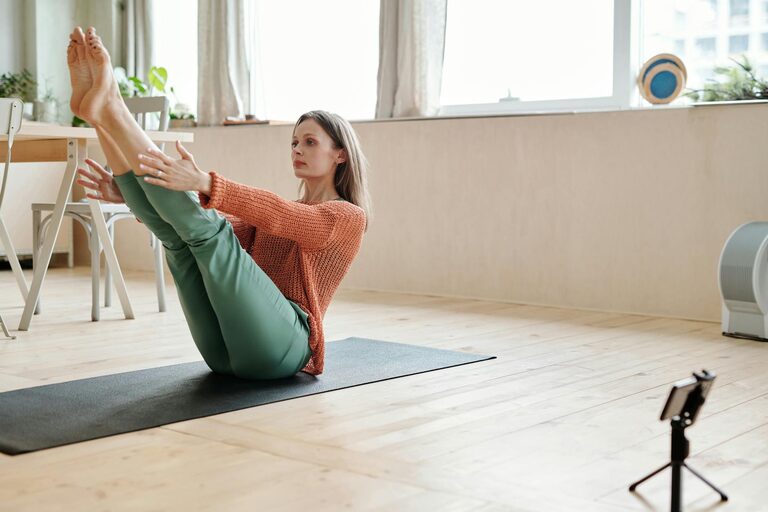
A Beginner’s Guide to Stretching at Home for Better Flexibility
Stretching is a fundamental part of maintaining good health and wellness. Whether you’re looking to improve flexibility, reduce muscle tension, or simply feel more energized, stretching at home is an easy and effective way to achieve your goals. In this guide, we’ll walk you through the basics of stretching, share beginner-friendly routines, and provide tips to help you make stretching a regular part of your day.
Why Stretching Matters
Before diving into the stretches themselves, it’s helpful to understand why stretching is important:
– Improves flexibility: Regular stretching helps lengthen your muscles and increase joint range of motion.
– Enhances circulation: Stretching increases blood flow to your muscles, which promotes faster recovery and reduces soreness.
– Reduces risk of injury: Flexible muscles are less prone to strains and sprains.
– Relieves tension: Stretching can help ease built-up muscle tightness caused by stress or prolonged sitting.
– Boosts posture: Stretching tight muscles can promote better alignment and posture.
Stretching doesn’t require special equipment or a gym membership, making it perfect for home practice.
Types of Stretching to Know
There are a few main types of stretching:
1. Static Stretching
This involves holding a stretch for a set period (usually 15-60 seconds) without moving. It’s great for increasing flexibility and is best done after your muscles are warm.
2. Dynamic Stretching
These stretches involve controlled, active movements that gently take muscles through their full range of motion. Dynamic stretches are useful as part of a warm-up to prepare your body for exercise.
3. Passive Stretching
In passive stretching, you use an external force (like a strap or another person) to help you stretch deeper. It’s often used in yoga and physical therapy.
For beginners at home, static and dynamic stretching are the easiest and safest to start with.
Preparing for Your Home Stretching Session
Before you begin stretching, it’s helpful to follow these steps:
– Warm up your muscles: Try five minutes of light activity such as walking or marching in place. Stretching cold muscles increases injury risk.
– Wear comfortable clothing: Loose, breathable clothes allow free movement.
– Find a quiet space: Choose a spot with enough room to move comfortably and minimal distractions.
– Use a mat or towel: This provides cushioning when stretching on the floor.
Beginner Stretching Routine
Here’s a simple full-body routine to get started. Hold each static stretch for 20-30 seconds, and repeat 2-3 times as you feel comfortable.
Neck Stretch
– Sit or stand tall.
– Slowly tilt your head to the right, bringing your ear toward your shoulder.
– Hold the stretch without lifting your shoulder.
– Repeat on the left side.
Shoulder Stretch
– Extend your right arm straight across your chest.
– Use your left hand to gently press your right arm closer to your chest.
– Feel the stretch across your shoulder.
– Switch sides.
Chest Opener
– Clasp your hands behind your back.
– Straighten your arms and lift your chest gently.
– Keep your shoulders relaxed.
– This stretch opens your chest muscles after sitting forward.
Side Stretch
– Stand with feet shoulder-width apart.
– Raise your right arm overhead and lean to the left side.
– Keep your hips grounded.
– Switch sides.
Seated Hamstring Stretch
– Sit on the floor with one leg extended straight.
– Reach toward your toes, keeping your back straight.
– You should feel a stretch behind your thigh.
– Switch legs.
Quadriceps Stretch
– Standing, hold onto a wall or chair for balance.
– Bend your right knee and grab your ankle with your right hand.
– Pull your heel gently toward your buttocks.
– Keep your knees close together.
– Switch legs.
Calf Stretch
– Stand facing a wall, one foot forward and one foot back.
– Keep your back leg straight with heel on the ground.
– Lean into the wall until you feel a stretch in the calf.
– Switch legs.
Tips for Successful Stretching
– Breathe deeply: Don’t hold your breath; deep breathing helps muscles relax.
– Move slowly: Avoid bouncing; steady movements reduce injury risk.
– Listen to your body: Stretch until you feel a gentle pull, never pain.
– Create a routine: Consistency matters. Try stretching at the same time each day.
– Stay hydrated: Drinking water supports muscle health.
– Track progress: Celebrate small improvements in flexibility or comfort.
When to Stretch
– After waking up, to gently loosen tight muscles.
– Before or after exercise to prepare your body or cool down.
– During breaks if you sit for long periods.
– Before bed to relax and unwind.
Common Mistakes to Avoid
– Stretching cold muscles.
– Holding breath during stretches.
– Overstretching past comfort or into pain.
– Rushing through stretches.
– Neglecting regular practice.
Additional Resources for Beginners
If you want to explore further, many apps and online videos offer guided stretching routines ideal for beginners. Yoga is also an excellent way to include stretching along with mindfulness.
—
Stretching at home is a simple habit anyone can adopt to feel more flexible, relaxed, and energized. Starting slow, focusing on technique, and staying consistent will lead to noticeable benefits over time. Grab your mat and get started today—your body will thank you!
